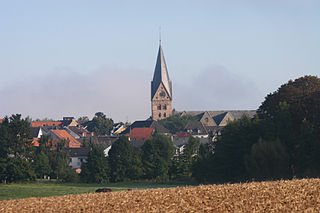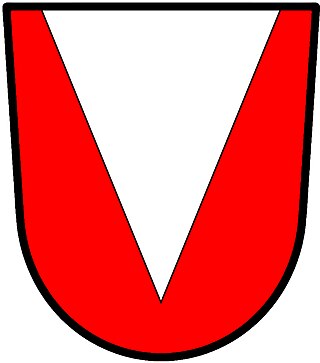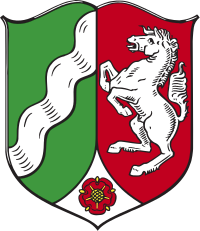
Westphalia is a region of northwestern Germany and one of the three historic parts of the state of North Rhine-Westphalia. It has an area of 20,210 square kilometres (7,800 sq mi) and 7.9 million inhabitants.

North Rhine-Westphalia or North-Rhine/Westphalia, commonly shortened to NRW, is a state (Land) in Western Germany. With more than 18 million inhabitants, it is the most populous state in Germany. Apart from the city-states, it is also the most densely populated state in Germany. Covering an area of 34,084 square kilometres (13,160 sq mi), it is the fourth-largest German state by size.

Coesfeld is a Kreis (district) in the northwestern part of North Rhine-Westphalia, Germany, west of the city of Münster. Neighboring districts are Steinfurt, district-free Münster, Warendorf, district-free Hamm, Unna, Recklinghausen, Borken.
Warendorf is a Kreis (district) in the northern part of North Rhine-Westphalia, Germany. Neighboring districts are Steinfurt, Osnabrück (district), Gütersloh, Soest, district-free city Hamm, Coesfeld and the district-free city Münster.

The County of Mark was a county and state of the Holy Roman Empire in the Lower Rhenish–Westphalian Circle. It lay on both sides of the Ruhr River along the Volme and Lenne rivers.
Recklinghausen is a Kreis (district) in the centre of North Rhine-Westphalia, Germany. It is surrounded by the neighbouring districts of Borken, Coesfeld, Unna, Gelsenkirchen, Bottrop, and Wesel. The district administration is located in the city of the same name.

Gütersloh is a Kreis (district) in the north-east of North Rhine-Westphalia, Germany. Neighboring districts are Osnabrück, Herford, district-free Bielefeld, Lippe, Paderborn, Soest and Warendorf.
Kleve or Kreis Kleve is a Kreis in the Lower Rhine region of northwestern North Rhine-Westphalia, Germany. Neighbouring districts are Borken, Wesel, and Viersen in Germany, and the Dutch provinces of Limburg and Gelderland.
Höxter is a Kreis (district) in the east of North Rhine-Westphalia, Germany. Neighboring districts are Holzminden, Northeim, Kassel, Waldeck-Frankenberg, Hochsauerland, Paderborn, and Lippe.
Paderborn is a Kreis (district) in the east of North Rhine-Westphalia, Germany. Neighboring districts are Gütersloh, Lippe, Höxter, Hochsauerland, and Soest.
Ordinaries in heraldry are sometimes embellished with stripes of colour alongside them, have lumps added to them, shown with their edges arciform instead of straight, have their peaks and tops chopped off, pushed up and down out of the usual positions, or even broken apart.

In heraldry, an ordinary is one of the two main types of charges, beside the mobile charges. An ordinary is a simple geometrical figure, bounded by straight lines and running from side to side or top to bottom of the shield. There are also some geometric charges known as subordinaries, which have been given lesser status by some heraldic writers, though most have been in use as long as the traditional ordinaries. Diminutives of ordinaries and some subordinaries are charges of the same shape, though thinner. Most of the ordinaries are theoretically said to occupy one-third of the shield; but this is rarely observed in practice, except when the ordinary is the only charge.

Steinheim is a town in Höxter district in North Rhine-Westphalia, Germany.

Kürten is a village and a municipality in the Rheinisch-Bergischer Kreis, in North Rhine-Westphalia, Germany.

The German state of Brandenburg has a coat of arms depicting a red eagle.

The coat of arms of the German state of Saxony-Anhalt represents its historical origins. The land area was formed out of the former Prussian Province of Saxony and the German Free State of Anhalt. The upper part of the coat of arms represents the Province of Saxony with its green crancelin while the lower half shows the bear of the Free State of Anhalt.

Burbach is a municipality in the Siegen-Wittgenstein district, in North Rhine-Westphalia, Germany.

The flag of the German State of North Rhine-Westphalia is a horizontal tricolor consisting of green, white and red.

In heraldry, a pile is a charge usually counted as one of the ordinaries. It consists of a wedge emerging from the upper edge of the shield and converging to a point near the base. If it touches the base, it is blazoned throughout.
The Constitution of North Rhine-Westphalia is the constitutional document that governs the responsibilities and rights of various offices and the Landtag of North Rhine-Westphalia, in Germany.
































